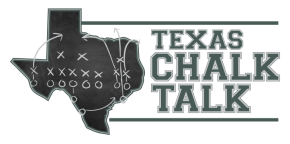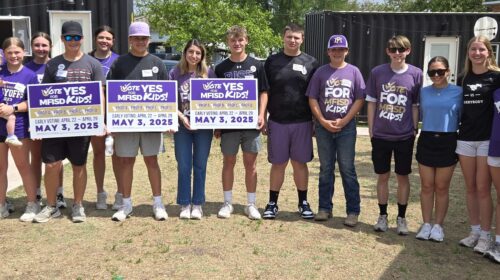Bowlsby discusses what the NCAA Oversight Committee will examine
Big 12 Commissioner Bob Bowlsby said he recently read some headlines he saw in a newspaper, noting that reporters wrote that “athletes aren’t real students, and coaches are paid too much.”
“It was from a 1927 New York Post,” he said with a grin. “Not much has changed. Somehow we’re sustaining.”
In a recent appearance, Bowlsby talked about some of the items that the NCAA’s Oversight Committee, of which he is a member, is examining, including the graduate transfer rule, the new fall signing period for high school football players, and changes to how coaches can use rules to take their players to other places during the offseason.
Bowlsby said he was bothered by two factors when quarterback Vernon Adams announced he was transferring to Oregon from Eastern Washington. He felt badly for the teammates Adams left behind and felt badly for the quarterback who’d been with the Ducks waiting for his chance after Marcus Mariotta turned pro.
Bowlsby explained that high school students are enrolling as early as the spring semester of their senior years in high school or for summer school at their chosen university. By the time they are on campus for three years, they have their degrees and can freely transfer to another university for graduate school if that school has the degree the student wants and if that student can be accepted into the school.
He noted that 18 percent earn their graduate degrees, adding most athletes don’t take enough courses to earn that graduate degree.
“It’s about playing,” he said. “We’re looking for ways to slow the transfer process.”
While what’s happening in football is bothersome, Bowlsby said the 47 percent of men’s basketball players who transfer after one year is troublesome.
The number of assistant coaches on football staffs also caught the NCAA’s attention. Bowlsby said he knows of one football program that has 97 staff members. One team playing in a bowl game had 14 assistant coaches in a pressbox with headsets on. He noted there are no restrictions on analysts and quality control coaches. What’s happened is that someone looking to join a college staff will influence two players to sign with a program and then land a job on that staff as an analyst, who will break down film, the commissioner said. Another area the NCAA will examine is in strength and conditioning, noting some head coaches hired individuals for those positions who may not have the proper training or certification to lead it.
“One of the most important assets is the strength and conditioning coach,” Bowlsby said. “We want to strengthen the leniency on them to make sure kids are safer in the offseason.”
Bowlsby said he spent a lot of time working on examining where coaches are having conversations with recruits, specifically at 7-on-7 tournaments and summer camps.
One of the coaches the NCAA looked at was Michigan coach Jim Harbaugh, who was in Florida for a camp.
“People are going every place running camps,” Bowlsby said. “Everybody knows recruiting conversations are going on.”
The other attention grabber for the NCAA is the amount of money being paid to people and to high school coaches bringing top players to 7-on-7 tournaments to talk to college coaches and to camps.
“We want to tighten that up,” Bowlsby said.
For the first time, high school football players will have an early signing, which will happen Dec. 20-22. That means they’ll be able to sign with the college of their choice during those dates or in early February during National Signing Day. In the future, the high school football early signing period will be for 14 days in the fall, Bowlsby said.
He added that research indicated that most Division I programs offered an average of 233 scholarships for 25 signees and that 75 percent of prospects had made their decision on where to attend college in October. Bowlsby said no one has been able to explain to him why the other sports enjoyed an early signing period, which is in November, but not football.
“We’re trying to bring more structure to it,” Bowlsby said.
Another rule change is that paid visits will occur in April, May and June. The old rule didn’t allow paid visits until September.
“A lot of kids made decisions before ever visiting a campus,” Bowlsby said.
The alleged number of sexual assaults committed by those in an athletic program has brought unwanted attention to college sports. Bowlsby noted that many college athletes come from backgrounds where they’ve had to take what they want with little consequences. He said that while Baylor was an easy example, the Bears aren’t alone. He noted the imprisonment of former Penn State defensive coordinator Jerry Sandusky after he was convicted of multiple counts of sexual abuse of children.
Bowlsby was asked if there’s anything that can be done to limit individuals with questionable character from setting foot on campuses.
“We don’t see the kids everyday,” he said. “We’re going about the process of due diligence. We don’t want coaches making decisions. We want it to be more up the chain. Look at all the information made available, we expect you to do due diligence. We haven’t gone so far as to say if they make a mistake, they can’t come. But you own that decision.”




